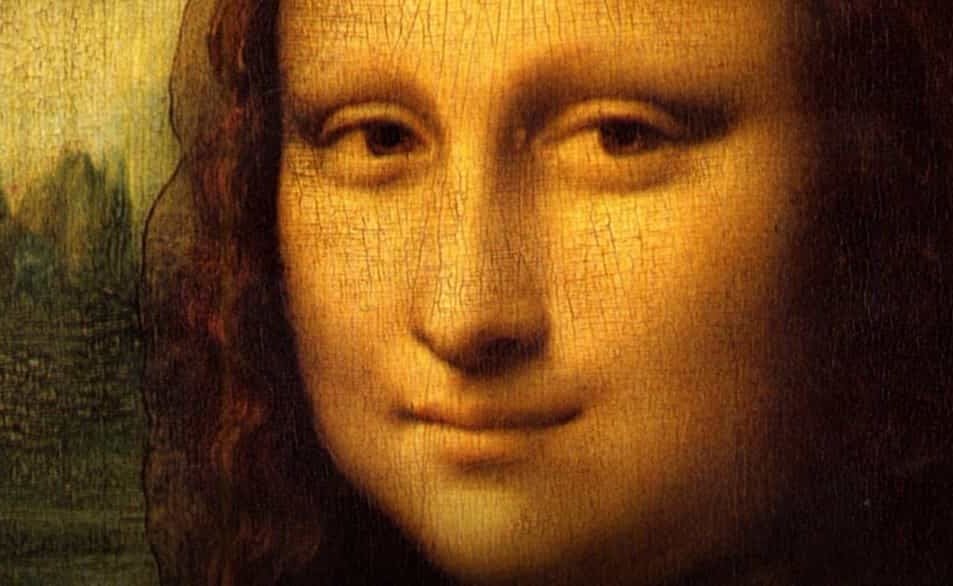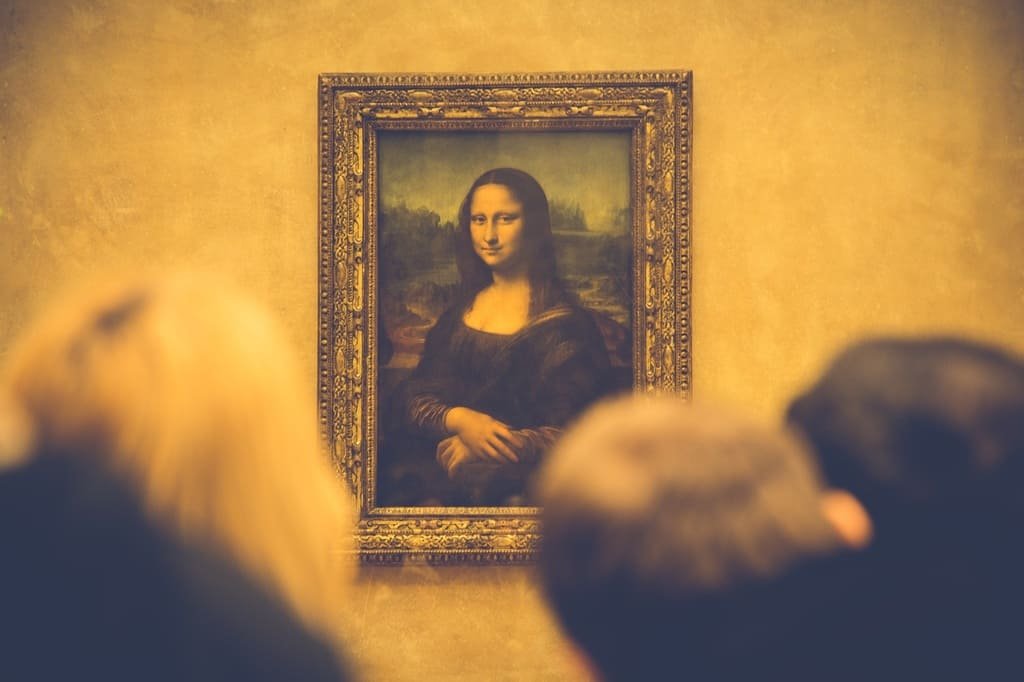The famous Mona Lisa painting by Leonardo da Vinci in 1503 didn’t become popular only because of its incredible artistic charm, but also thanks to the smile of Mona Lisa.
But, is Mona Lisa really smiling, or is it just a Mandela effect? This article will answer this global dilemma and other controversies regarding this painting.
To give you a clue: the perception of the Mona Lisa changes depending on the angle the viewers look at it from. But it is more than that, so keep reading to unveil this mystery!
Is Mona Lisa’s smile simply a False memory among people?

It might be tempting to look at Mona Lisa’s smile as a Mandela effect and skip diving deeper into this enigma. But this is not the case.
The Mandela effect is a false memory that resides in the minds of a group of people that genuinely believe it happened, when in reality, it didn’t happen. It started with the death of Nelson Mandela, which many believed took place in 1980. Mandela actually gained his freedom in 1990 and didn’t die until 2013. Even so, some people today are sure Nelson Mandela passed away as early as 1980. This effect was since applied to many other social perceptions that are different from the factual reality.
However, this is not the case here.
Yes, we can say that Mona Lisa’s smile is not a Mandela effect because the painting still exists today, and people perceive it differently. Anyone can take a look at Mona Lisa and decide for themselves if she is smiling or not. Furthermore, we also know that contemporary painters, such as Vasari, certified that Leonardo da Vinci intended for Mona Lisa to have an enigmatic smile.
So, Was Mona Lisa smiling or not? What causes the Mona Lisa effect?

To be straight, Mona Lisa was indeed smiling, but Leonardo da Vinci painted her smile by using the “uncatchable smile” technique. The artist used this technique in famous paintings, such as “La Bella Principessa.”
The “uncatchable smile” that da Vinci mastered in his paintings was researched and somewhat explained by Sheffield Hallam University in a recent study. Through this technique, paintings such as Mona Lisa appear as smiling from certain angles, such as the front view, but this perception disappears when they are viewed from different angles. This doesn’t mean the smile was never there or intended to be. It simply means it is not visible from all viewing points, similar to an optical illusion.
Leonardo da Vinci called this painting technique “sfumato,” and it was adapted to other painters later on. Sfumato refers to the shading and layers of color applied to a painting to create perceptions based on the angle it is viewed and the way the light falls on it.
Leonardo da Vinci also created a slight asymmetry when he painted the mouth of the Mona Lisa. Viewed by itself, the mouth doesn’t appear to be smiling, but when we look at the entire painting, we see the smile.
Why is there a lot of chatter, on some people seeing Mona Lisa smiling while others not seeing a smile?

A famous painter from the Renaissance era, Giorgio Vasari, described Mona Lisa’s smile as “there was a smile so pleasing that it was more divine than human.” But the dilemma of Mona Lisa’s smile still persists according to each art lover that comes across this masterpiece.
Well, the controversy regarding Mona Lisa’s smile was intentional, as da Vinci developed this enigmatic smile technique. His paintings, starting but not ending with Mona Lisa, were created to interact with the viewer, and he succeeded. Her smile is only present (and sometimes not) according to the light, angle, and distance from which the painting is seen, but also according to the viewer’s perception.
Yes, since Mona Lisa’s smile is an enigmatic type of smile, it lies a lot based on the viewer’s perception. Some viewers claim she is smiling, and others claim she is not, but this is based only on how they understand the painting.
Naturally, since each viewer will interpret the facial expression of the Mona Lisa differently, they will all believe in their own perception, which becomes controversial when it is not shared by others.
Ultimately, no one is wrong, as the smile was created to be perceived according to each individual.
What do the studies and research say?
Mona Lisa’s smile and it’s Mandela effect among people, was the subject of several studies that tried to confirm or infirm the smile some viewers saw on her face, while others didn’t. According to Borkowski JE. Mona Lisa: the enigma of the smile, the woman in the painting is not smiling. According to this study, she is missing her front teeth, which creates the smiling effect. There are clues in the perioral area of the face that indicate the lack of front teeth.
Another research by the University of Cincinnati found Mona Lisa’s smile to be accurate, but due to the asymmetry that da Vinci used as a painting technique to create his “uncatchable smile.” Researchers also describe her smile as a grin visible on the face due to a lie. So, her smile might not be the most genuine of smiles, but it is, nevertheless, a smile, according to this study.
So, these all prove that there is indeed a mystery behind Mona lisa’s smile and is not just a Mandela effect among people.
Final thoughts
Mona Lisa is the most iconic painting from the Rennaicense era and will raise eyebrows for a long time ahead. And her smile remains a magical creation of Leonardo da Vinci and his incredible talent.
So, look at the painting and see what you think. Is she smiling? Because the way each viewer understands this painting gives it the value it still has today, more than five centuries after it was created.
Irina Maria Tracy is a published author, writer, and journalist who lives in Bucharest, Romania. She completed her journalism and mass communication degree from the University of Bucharest and went on to publish some top books in the fiction genre. Some of her top books include 'Haunted Aliens' 'Vampires Rapture' 'Adverbs of Love' etc. Irina also worked as an investigative journalist for a year and even collaborated with a TV channel for a political talk show (Bah TV). She loves writing and has contributed to many top magazines and newspapers such as the 'Story Magazine' 'Curentul Newspaper' and many others.
